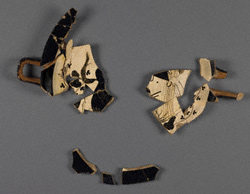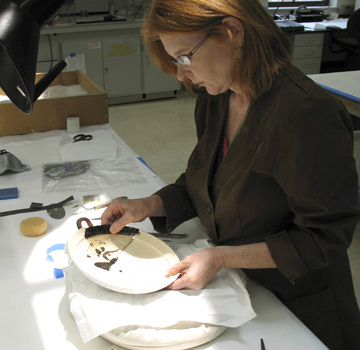Case Study: A Rare Cup
|
The restoration of this fragmentary cup demonstrates how even a few fragments can provide a wealth of information. Conservators began the restoration by comparing renderings of the cup's fragments to concentrically drawn circles to determine the cup's original size. They then used profile drawings of a similar cup to re-create the foot, which was turned on a lathe using a synthetic material. The body of the cup was re-created on a turntable using synthetic materials, and sections were cut out of the form to accommodate the ancient fragments. Vase fragments in the J. Paul Getty Museum with similar painted imagery were studied to help reconstruct the figures of Dionysos and a satyr. Drawings based on these fragments provided options for completing the painted figural scene (see image below right). |

|
|
|
Because there are few direct parallels to the unusual painting style, curators decided that reconstruction of the vessel's form was sufficient and that missing parts of the scene should not be painted in. |
||

|
|
|